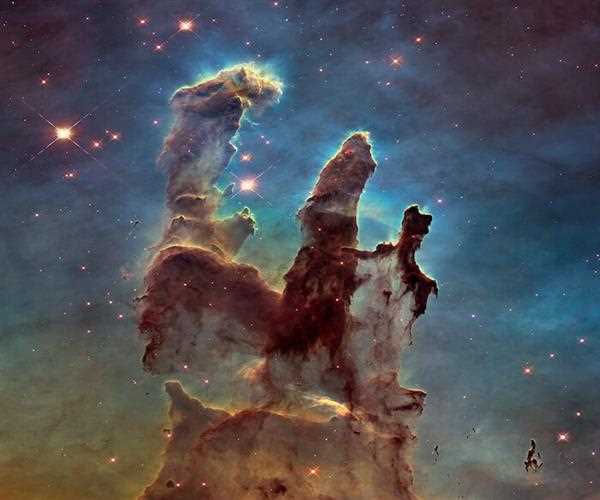A Galaxy is a gravitationally bound system of stars, stellar remnants, interstellar gas, dust, and dark matter. The word galaxy is derived from the Greek galaxias (γαλαξίας), literally 'milky', a reference to the Milky Way. Galaxies typically range from dwarfs with a few hundred million (109) stars to giants with one trillion (1012) stars, all orbiting the centre of mass of their respective galaxies.
A Nebula is an interstellar cloud of ionized gases such as dust, hydrogen, and helium. Originally, the term 'nebula' was used to describe any diffuse astronomical object, including galaxies beyond the Milky Way. Most nebulae are enormous in size, with some measuring hundreds of light-years across. A few nebulae are nearly as large as a galaxy such as the Tarantula Nebula in the Large Magellanic Cloud.
A star is a bright sphere of plasma held together by gravity. The Sun is the closest star to Earth. Many other stars are visible to the naked eye from Earth at night, appearing as a swarm of fixed illuminated points in the sky due to their enormous distance from Earth. Historically, the brightest stars were assigned names after being grouped into constellations and asterisms. Astronomers have put together star catalogues that identify known stars and provide conventional stellar designations.
Planetesimals are small planets, or planet-like bodies, that orbit stars. Most planetesimals are thought to have formed in the protoplanetary discs that surrounded young stars. In our own Solar System, the best-known planetesimals are the asteroids, which orbit the Sun between Mars and Jupiter. However, the term 'planetesimal' can apply to any small body that orbits a star, including moons, comets, and even planets.

Relation between them
The universe is a big place. In it, there are galaxies, nebulae, stars, and planetesimals. Each one of these has their own place in the grand scheme of things. Galaxies are the largest structures in the universe. They are made up of billions of stars, gas, and dust. Nebulas are clouds of gas and dust. They are often the birthplace of stars. Stars are the building blocks of galaxies. They are huge balls of gas that shine brightly. Planetesimals are small rocks that orbit stars. They are the building blocks of planets. The relation between these four things is that they are all part of the universe. Each one has their own place in the cosmos.